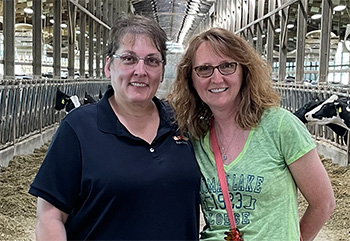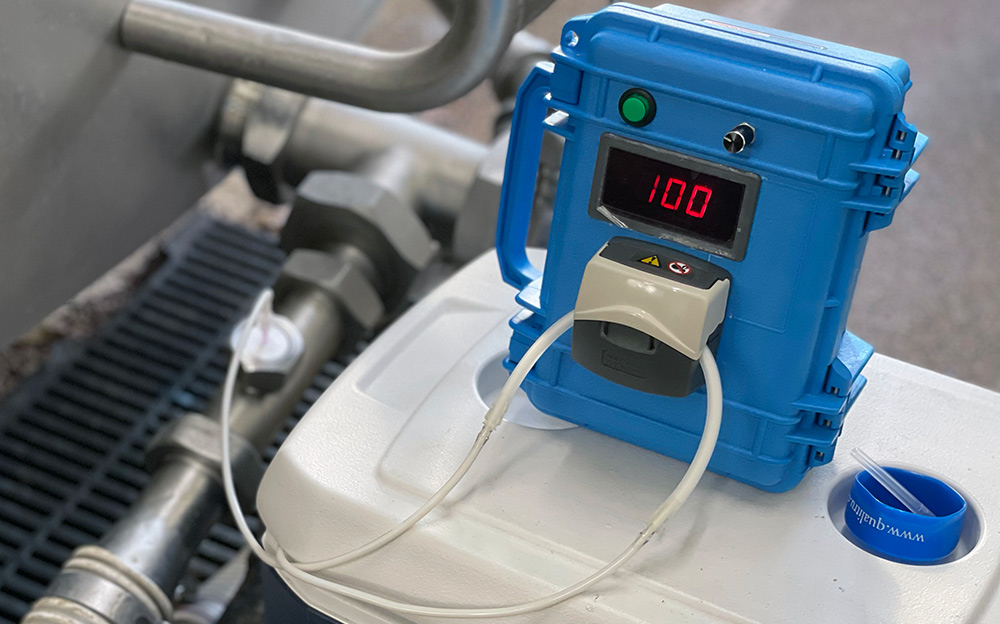Aseptic and Representative Sampling for Dairy Farms — Importance of Being Proactive (Part 2)
 Aseptic and representative sampling for dairy farms is a big topic. This post is the second part of an in-depth conversation I had with Denise Sutton, our DFA Farm Supplies partner’s Sales Manager. Denise’s extensive experience in the dairy farm industry ranges from being a herd manager and running a dairy farm, being a trusted partner for dairy farms supplies, to working with stakeholders to implement change.
Aseptic and representative sampling for dairy farms is a big topic. This post is the second part of an in-depth conversation I had with Denise Sutton, our DFA Farm Supplies partner’s Sales Manager. Denise’s extensive experience in the dairy farm industry ranges from being a herd manager and running a dairy farm, being a trusted partner for dairy farms supplies, to working with stakeholders to implement change.
In part one of my interview with Denise, we discussed the importance of sampling for dairy farmers, mainly how they use QualiTru’s aseptic and representative sampling system in their operations.
In part two of our discussion, we focused on the impacts of QualiTru’s sampling systems (QSS) on farm workload and problems with inconsistency. Denise also shared her unique perspectives on possible changes in the dairy industry and why education on aseptic sampling is essential.
Mara: How would adding the QSS impact the workflow on a farm?
Denise: In my opinion, it’s really not that big of a deal because it’s so quick. For instance, once you have that septum installed for pen sampling, you just open a new bag and switch the bag — it’s a two-second procedure. The dairy farm employees are used to protocols, and this would just be part of the protocol at that point.
Although, if you’re sampling for nutrition, string sampling, or something like that, you’re probably going to have your herdsman, or even the owner, come over to manage the process on those days because it would not be part of the day-to-day protocols. Or, if there are people on site that they would trust to do it, such as the cow pusher when he brings in that new pen or when he’s there in the parlor to get the last of that pen out, he switches the bag over. It’s a very easy process, so it is not really adding labor to the employees.
Mara: Can you share your thoughts on our four components for sampling applications (port, septum, collection unit, and pump) and your experience with them?
Denise: The experience that I personally have had is doing the demo of them. I think it’s easy, it’s streamlined, easy to understand, and easy to comply.
Mara: Can you share some experiences where our sampling product has made a significant difference in quality, sampling, safety, and/or payment for farmers/co-ops?
Denise: About a year ago, I was involved in installing the QualiTru aseptic sampling system (port, 7-port septum, bags, and pump) at a dairy farm in Michigan. They are thrilled with the new system because it has brought consistency to their samples. They’re not bouncing all over the board like they were before taking their own samples. In fact, consistent sample readings of the milk components (fat and protein, reduced cell counts, other solids) and quality have paid for the system over and over – and they’ve only had the system a year.
“They are thrilled with the new system because it has brought consistency to their samples. In fact, consistent sample readings of the milk components and quality have paid for the system over and over—and they’ve only had the system a year.”
Mara: What changes do you possibly see in the dairy industry that could affect the inline process sampling?
Denise: Some changes I see happening could be:
- Increase in farmers going to Direct to Load (DTL). One challenge with the DTL system is accurate sampling of the load, which can be a challenge to obtain. Tankers do not have built-in agitation, which can make accurate sampling a problem. A question to be addressed in the planning process is where the tanker will be sampled and how—requirements will vary with the state and the market. (See Progressive Dairy, Considerations for direct tanker loading on dairy farms).
- Less agitation ability at the plants. Deliveries used to come in smaller trucks, and the plants accepted road agitation. However, now you have larger tankers that cannot be agitated, and most plants don’t have the ability to agitate, both of which will affect representative sampling.
Mara: Do you have suggestions for what QualiTru can be doing more for dairy farmers and co-ops?
Denise: Training and Education. I think the biggest thing right now is a lack of training and education around QualiTru products. QualiTru needs to make more effort to train and educate on what their aseptic and representative sampling system is and what it can do.
- Educate the producers
- Educate plants
- Educate the state inspectors
- Educate the regulators
[QualiTru is committed to educating and providing regular hands-on training. See our Resources section]
Helpful resources on applications for dairy farms
We were proud to collaborate with our partners at the DFA Farm Supplies to compile four helpful training videos to learn how to use our products, as well as the practical applications of our industry-leading sampling systems.
- Sampling to analyze for milk quality.
- Sampling to analyze for contamination.
- String sampling for herd health.
- Sampling for payment.
QualiTru sampling systems are ideal for:
- Direct Load – The best continuous flow sampler for an accurate representative sample of the entire volume of milk.
- Vertical/Horizontal Milk Tanks – The QualiTru systems provide aseptic access to fluid raw milk product without requiring the opening of manway doors.
- Bulk/Silo Tanks – Allow for the collection of universal samples after agitation while the milk hauler remains safely on the ground.
- Veterinarians/String Sampling – An accurate system for isolation of contamination and for monitoring milk quality and overall herd health.
Reliable aseptic and representative sampling made simple
QualiTru systems are extremely easy to use and implement into your system. Designed for process monitoring for such applications as mastitis control, microbial contamination, component verification, and regulatory compliance, QualiTru provides cost-effective solutions for the highest level of quality assurance.
- Learn more about QualiTru’s representative sampling solutions for dairy farms.
- View our catalog of sampling and process monitoring products




